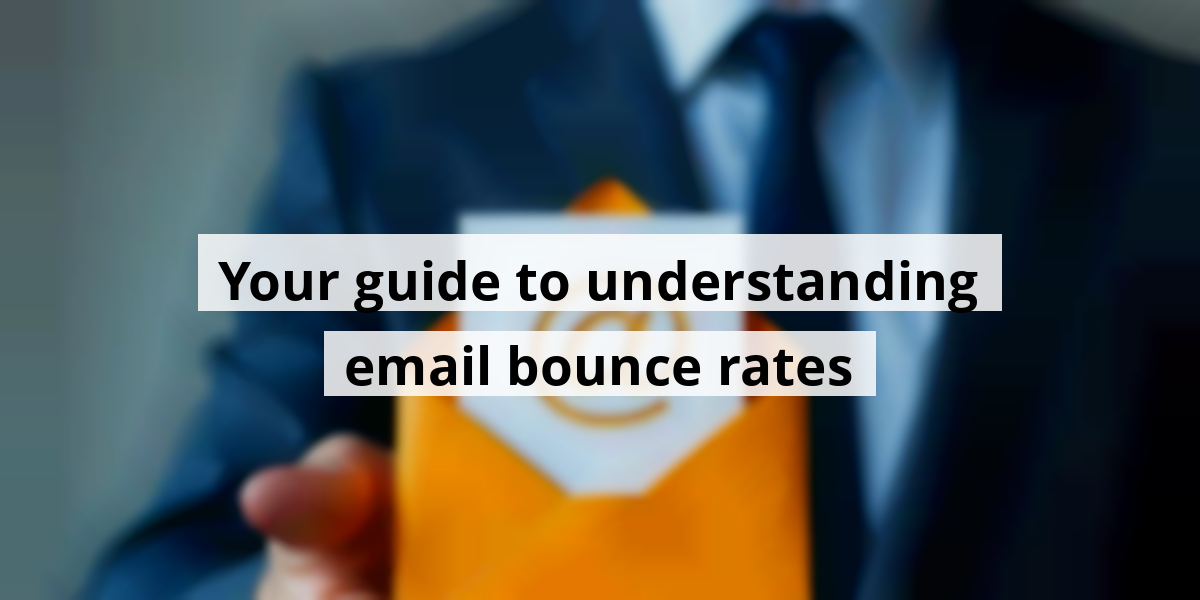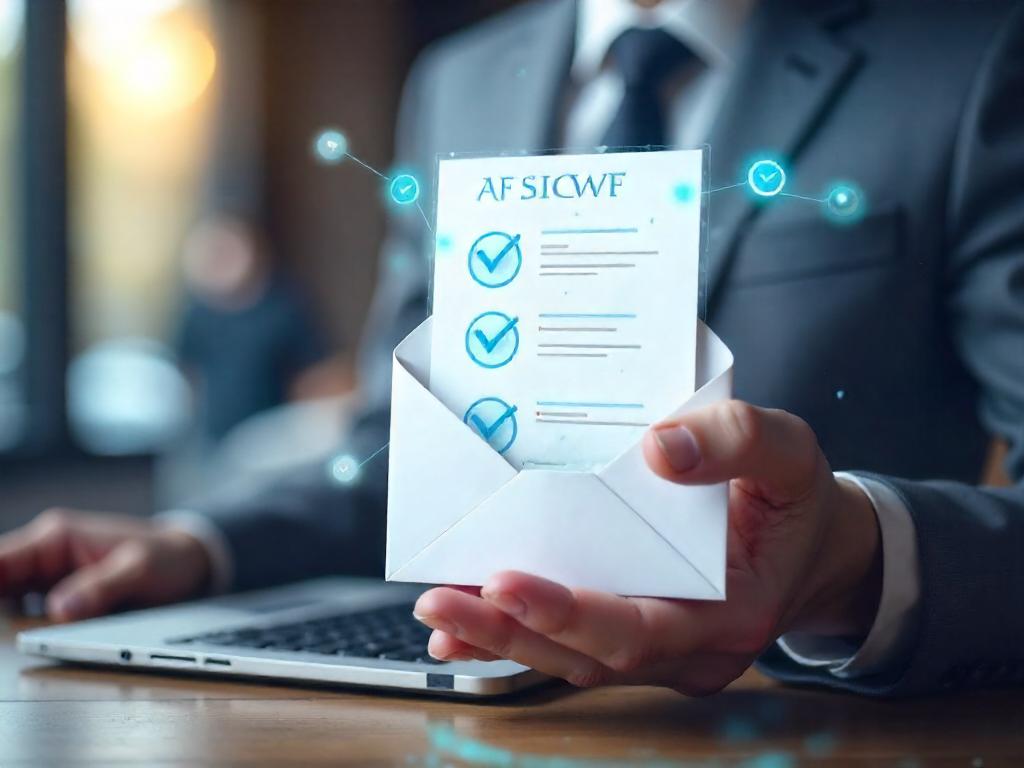 LIMITED SPOTS
All plans are 30% OFF for the first month! with the code WELCOME303
LIMITED SPOTS
All plans are 30% OFF for the first month! with the code WELCOME303

 LIMITED SPOTS
All plans are 30% OFF for the first month! with the code WELCOME303
LIMITED SPOTS
All plans are 30% OFF for the first month! with the code WELCOME303


Now we’re going to discuss email bounce rates, a topic that might not be the most glamorous but is definitely essential for anyone diving into email marketing. Think of it this way—if your emails aren’t reaching their destination, it’s like throwing a party and no one shows up! Talk about a downer.
The term "bounce" may bring to mind an image of joyful kids on a trampoline, but when it comes to emails, it's a whole different ball game. Picture this:
When an email bounces back, it gets returned to us faster than a boomerang. We've all experienced it—sending out those beautifully crafted emails, only to see them ricochet back. It can be quite the mood killer, especially when you’re trying to engage your audience.
Your email service provider keeps tabs on these bounce rates. If they’re too high, it’ll impact your sender reputation. Kind of like when a dog barks at you and you lose a bit of trust in its owner.
So how do we tackle this? First, let’s break down how email bounce rates are calculated.
Calculating the Bounce RateOur email service provider makes that easy with a nice percentage. But here’s the kicker—we get to wear our math hats! To find the bounce rate, we take the:
Let’s say we sent out 80,000 emails and 156 bounced back. Well, that’s (156 ÷ 80,000) x 100 = a whopping 0.20% bounce rate. Not too shabby!
Generally, keeping it below 2% is the golden rule in email marketing. If that number climbs, it's high time to check your email list's health. Think of it as your inbox’s annual check-up. Just like we can't ignore our physical health, we shouldn't ignore our digital health either. And let me tell you from experience—an aging email list can lead to more bounces than a rubber band ball at a toddler's birthday party!
So, the moral of the story? Monitor those bounces and pamper your email list. Because in the end, you want to send those emails out, and have them land smoothly—preferably not in the spam folder or on a digital trampoline!
Now we are going to talk about how diverse email bounce rates can be across various industries and what this means for us.


Next, we are going to talk about the nitty-gritty of email bounce rates. You might not think it’s riveting stuff, until one of your emails thuds back at you like a lead balloon. Let’s unravel the mysteries behind those bounces, shall we?

So, what’s a soft bounce? Imagine sending a birthday invitation only to find out the mailbox was stuffed full with pizza flyers and cat videos. A soft bounce means your email made it to the recipient's server but got sent back for a reason that’s temporary.
Here are a few reasons for those pesky soft bounces:
Now, let’s get serious with hard bounces. This is like sending that same invitation only to learn the address doesn’t exist, or worse, the recipient has blocked your email faster than you could say “spam.”
A hard bounce happens for reasons like:
Here’s why this matters: when hard bounces occur, your email marketing tool throws up its hands and says, “No more emails to this address!” A high hard bounce rate is like a ticking time bomb for email deliverability.
| Bounce Type | Definition | Common Causes |
|---|---|---|
| Soft Bounce | Temporary delivery issue | Mailbox full, server down, large attachments |
| Hard Bounce | Permanently undeliverable | Invalid address, server blocks, non-existent domain |
In the end, understanding these bounce rates can make or break your email marketing strategy. So, let’s keep those bounces at bay and hit the inbox instead. Who knows, you might even make the day of someone who loves cat videos!
Now we are going to talk about the reasons emails bounce back. You know that feeling when you send an email and moments later you get that dreaded bounce-back message? It’s like hearing a door slam after you knock on it. Ouch! So, what’s really going on behind the scenes? Let’s break it down together!
First off, it’s not always your email tool’s fault. That shiny software sends your emails off into the digital ether, and what happens next is often out of your hands. Here are some classic culprits:
Soft bounce red flags:So there you have it! Next time you encounter a bounce, don’t take it personally. It’s just a part of the digital dance we all do.
Next, we are going to discuss some effective strategies to help cut down that pesky email bounce rate. You know, that feeling when you hit the "send" button and hope for the best? Let’s make sure your emails don’t end up in the cyber black hole!


Let’s face it: both soft and hard bounce rates can be a real headache. But don’t worry! Here’s a quick checklist of our favorite practices to keep those bounces at bay.
We all love a good confirmation moment, right? When collecting subscribers, using double opt-in forms ensures that your subscribers receive that all-important confirmation email. They click a link to prove they’re alive and kicking—not just a random spam bot trying to sneak in!
Think of your email list like your fridge: if it’s cluttered and expired, you’re in trouble! Regularly clean up with email validation tools to check for typos or obsolete addresses. Anyone has a friend who's convinced they signed up but used their “work” email that's actually an ancient Hotmail? Yep, save everyone some time!
And hey, why not ask subscribers to update their info directly? That way, you only deliver the spicy content they crave.
Think of authenticating your domain as showing your ID at a bar. It’s that little nod of approval that says, “I’m here for the good stuff!” An authenticated domain helps those email providers like Gmail and Outlook trust where your messages are coming from. Trust is crucial, like that time we trusted the slice of pizza with questionable toppings. Spoiler alert: we should’ve waited for the pepperoni!
If MailerLite is in your toolkit, you can authenticate right from your dashboard. Check out this guide for help!
Saying no to free sender domains like ‘@gmail.com’ is wise. They can’t be authenticated, and let’s be real—nothing screams “I’m not professional” like a personal email address sent to your subscribers!
Setting a regular email cadence is crucial. We don’t want our subscribers to wonder if they’re on a secret email list or hiding from their inbox! By establishing the frequency and types of emails, even the algorithms will breathe a sigh of relief as they recognize the routine.
If you’re consistent, expect a delightful relationship between you and your followers. And hey, we all prefer “normal” communication over trying to interpret cryptic messages, right?
Alright friends, let’s unpack the vital art of tracking bounce rates with campaign reports. It may not sound as thrilling as a rollercoaster ride, but trust us, it’s just as important for keeping your email marketing on point.
When we think about bounce rates, it’s like a game of dodgeball — some emails just aren’t meant to land. In our trusty MailerLite reports, we can easily spot how many of our emails are bouncing. You'll often see two categories: soft bounces and hard bounces. Soft bounces are the ones that just need a little time before they can receive our messages again. Think of them as emails that are crying, “I’m too busy right now!” They’ll stay on our subscriber list, but if they keep bouncing three times, poof! That's when they turn into hard bounces, which is more like them throwing up their hands and saying, “I give up!”
Now, here’s the beauty of MailerLite: it’s like having a personal assistant who takes care of the hard bounce problem for us. Those pesky hard bounces automatically get shuffled into the 'Bounced subscribers' category. No need to spend hours manually sorting through names. Thank you, MailerLite!
But if you receive a hard bounce for an email you suspect might be a mistake, don’t just sit there like a deer in headlights. Reach out and contact support. They’ll peek into the bounce log for you, which is incredibly reassuring.
Now here’s a fun fact: we've got this nifty Anti-Spam policy in place. If your email bounce rate exceeds 5%, you’ll receive a friendly heads-up to clean house. It’s a bit like your parents reminding you to clean your room before your friends come over! Nobody wants a messy email list affecting their sender reputation.
If you’re ready to spruce things up and learn more, check out our performance reports or dive into our email campaign reports article. You’ll be a bounce rate pro in no time!
So, let’s keep our emails flying high and our bounce rates low!
Now we are going to talk about the art of nurturing that precious email list of yours. Because let’s face it—without a solid subscriber list, email marketing feels like trying to bake a souffle without eggs. Spoiler alert: it won’t rise! So, let’s pump up that list and keep those subscribers smiling.

Your subscriber list isn’t just some random collection of emails; it's the lifeblood of your marketing mission. Think of it like the engine in a classic car—without proper maintenance, it’ll stall faster than a toddler at bedtime!
When our subscriber list is healthy and bouncing zero times, we enjoy better deliverability, improved open rates, and a stellar sender reputation that can make even the grumpiest marketer smirk.
To transform your list into a powerhouse, here are some tips to keep it in tip-top shape:
With these strategies, we’re well on our way to creating an environment where bounces are scarce, and subscribers are happy! Pass the email marketing, please!
| Strategy | Description |
|---|---|
| Clean List | Perform regular email bounce checks to remove invalid addresses. |
| Double Opt-In | Ensure genuine interest from subscribers via confirmation. |
| Domain Authentication | Maintain a strong sender reputation. |
| Consistent Campaigns | Engage with fresh, relevant content regularly. |
| Bounce Rate Tracking | Monitor performance through campaign reports. |
By the way, this piece reflects on data up to October 2023. Time flies when you're having fun in email marketing!

